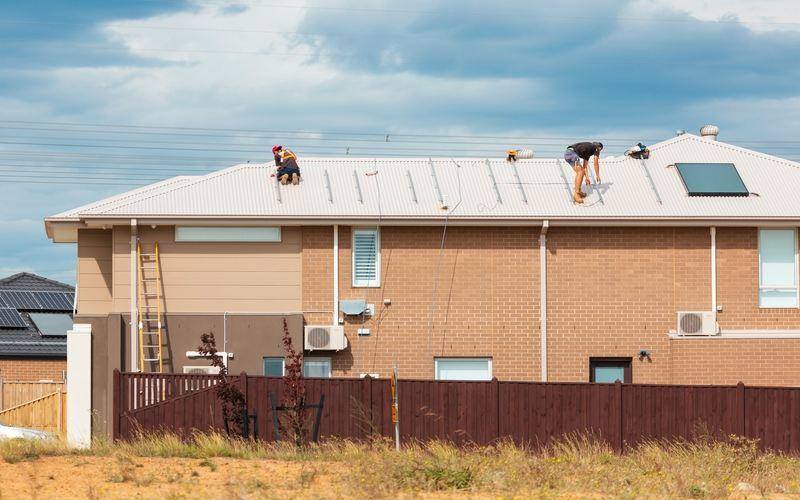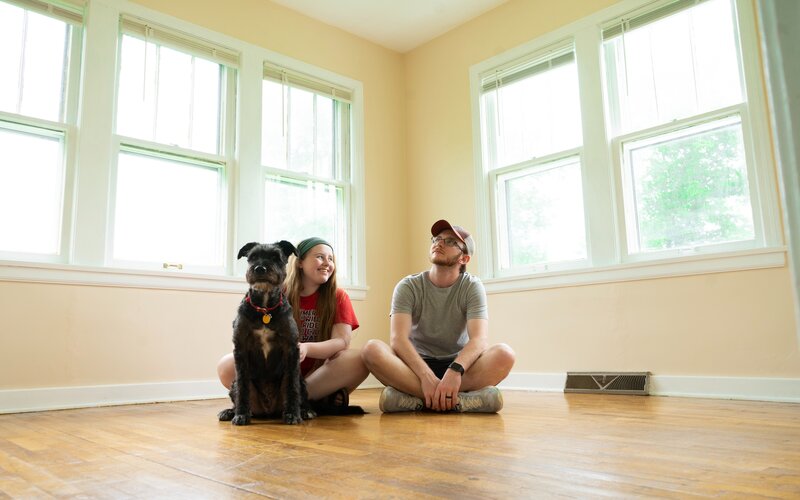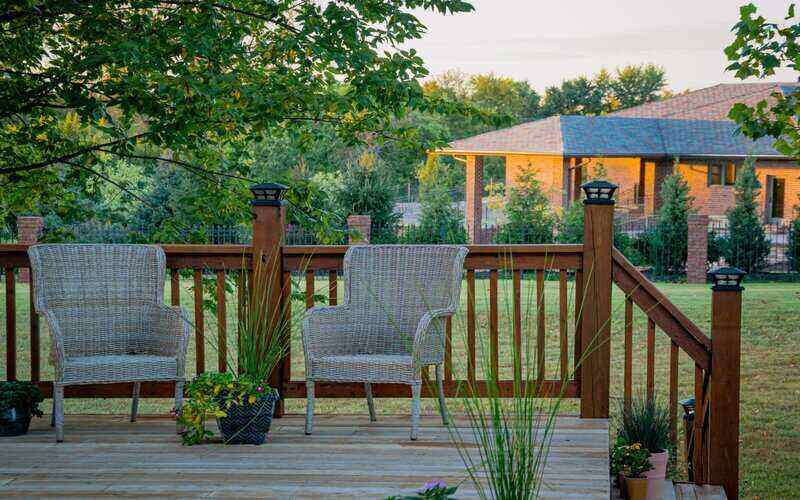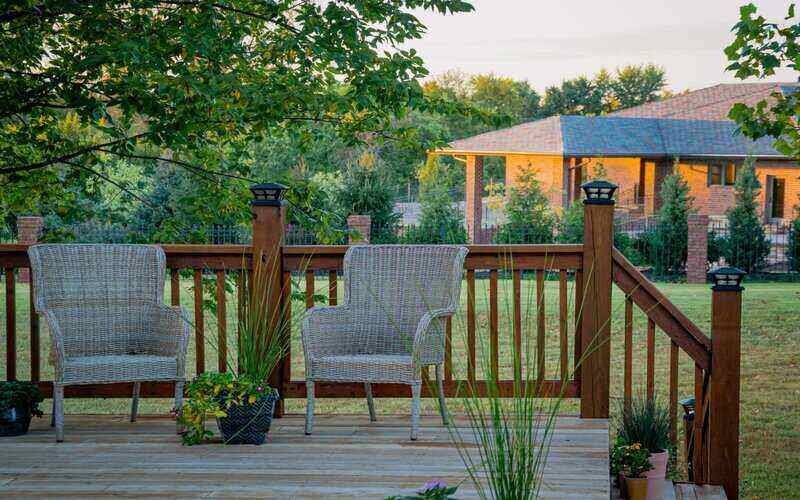In early June, the Morrison Government introduced the HomeBuilder scheme to spark a ‘tradie-led' economic recovery amid Australia’s first recession in 29 years.
The scheme is not without its criticisms, with some saying it’s too limited in its scope, has a minimum required spend that is too high, and will only really be used by people who were already planning on building/renovating, given the short time frame it needs to be completed by.
But if you’re one of the people who will be using the scheme, or is at least thinking about it, then you need to know how you'll finance the build/renovation. After all, the $25,000 grant will only cover a small portion of the overall cost.
What is the HomeBuilder scheme?
The HomeBuilder scheme provides a $25,000 grant for new home builds and renovations for contracts entered into between 4 June 2020 and 31 December 2020. To be eligible for the HomeBuilder scheme, you must:
-
Be an Australian citizen aged 18 years or older and be an individual, not a company or trust.
-
Be on a taxable income of less than $200,000 for couples, and $125,000 for singles.
-
(For renovation) Be spending between $150,000 and $750,000 on a renovation for a home valued at less than $1.5 million.
-
(For new home build) Be building a new home worth less than $750,000 (this includes land value).
-
Not be using it for an investment property
-
(For renovation) Be using it for an attached renovation (unattached renovations like swimming pools, tennis courts, outdoor spas etc. are excluded).
“If you’ve been putting off that renovation or new build, the extra $25,000 we’re putting on the table along with record low interest rates means now’s the time to do it,” the Prime Minister said when announcing the scheme.
So essentially, you have to either be building a new owner-occupied property worth a maximum of $750,000 (including land) or be doing renovation work costing between $150,000 to $750,000 on a property worth less than $1.5 million in order to qualify, as well as have a household income below a maximum of $200,000.
Read also: Good or bad? How the experts reacted to HomeBuilder.
And what is a construction loan?
A construction loan is a specific type of home loan, designed to assist with the funding of a new home’s construction. They’re a bit more complicated than standard home loans. For one thing, the home doesn’t exist yet, so it’s harder for a lender to assess the value of the property, and thus you might be charged a higher interest rate.
Construction loans also typically charge interest-only repayments for the duration of the build, which is initially set at 12 months in most cases. Once construction is complete, the repayments revert to principal and interest for the duration of the mortgage term, which is the period known as the ‘end loan’.
Another unique feature of construction loans is how their repayments are calculated through something called progressive draw-down, which divides the home loan up into different construction stages and only charges interest on each stage. Varying from lender to lender, a loan drawdown process usually consists of five to six stages, which might look something like this:
|
Stage |
Includes |
|---|---|
|
Deposit |
Paying the builder to begin construction |
|
Base |
Concrete slab complete or footings |
|
Frame |
House frame complete and approve |
|
Lockup |
Windows/doors, roofing, brickwork, insulation |
|
Fixing |
Plaster, kitchen cupboards, appliances, bathroom, toilet, laundry fittings/tiling etc. |
|
Completion |
Fencing, site clean-up, final payment to builder |
So for example, if building the base of your home costs $150,000, then you’d only be charged an interest-only interest rate on that $150,000 before you have to pay the builder for the next stage. This applies to larger-scale renovations too, such as adding a new room or a new level to your house, which can cost over $150,000 as specified by HomeBuilder.
For this reason, a construction loan might be the loan of choice for those using the HomeBuilder scheme. But how does this all work?
Read more about the pros and cons of construction loans.
So how do HomeBuilder and construction loans work together?
HomeBuilder and construction loans are closely linked together, as construction loans are often used for financing renovations over $100,000 and the construction of homes. Many customers prefer using a construction loan over a line of credit for renovations or building projects.
Construction loans are structured specifically so that the payments cover the costs of the build-in staged releases, as negotiated by the homeowner and the builder.
This may offer more security, discipline and oversight around the payment process than a line of credit, which can be used on expenses not related to the build.
HomeBuilder’s details are yet to be fully finalised at a government level (State or Federal), as each State and Territory Government has still to sign up to the Federal Government’s National Partnership Agreement and confirm application processes.
Once these agreements have been confirmed, then banks can settle on the exact process, including how to apply and when to apply. But, securing the construction loan finance before applying for HomeBuilder may be necessary, as the plans and contracts between the customer and builder will need to be finalised to secure the government’s approval for the $25,000 Homebuilder payment.
What other HomeBuilder financing options are there?
As mentioned above, construction loans are the most common financing option used by people making major structural renovations, but there are some other methods that can be used.
If you have the funds available via a redraw facility, or in a savings account, and you wish to use those funds for the renovation, then there’s nothing stopping you.
But, even if you do have sufficient funds saved, servicing a separate debt for a renovation could make more sense for you financially, and the structured payments of a construction loan may offer some surety to the process. It all depends on what your financial goals are.
Read: What is a redraw facility and what is an offset account?
Can the $25,000 grant be used as a deposit?
There’s been a fair bit of confusion lately as to whether that $25,000 grant can be used as a deposit for building a new home or for a big renovation, or whether it can just be removed from the overall cost of the build. The ABC for example recently wrote an article on this topic and approached each of the big four banks as well as a number of mortgage brokers to ask whether the grant could be used as a deposit, and couldn’t get a definitive answer due to “lack of detail from the Federal Government”.
According to the ABC:
-
NAB customers will be able to put HomeBuilder grants towards a deposit, but the total deposit required will not change.
-
ANZ customers will be able to use the $25,000 grant as part of the equity contributed to building costs, as long as a loan is not subject to lenders mortgage insurance (LMI).
-
Commonwealth Bank said it was still working through the details of the scheme, but indicated “normal construction loan lending conditions would apply”.
-
Westpac did not comment
Each state will ultimately have different requirements and parameters about how the HomeBuilder grants are distributed and these are still being negotiated with the Federal Government. Industry insiders suggest that the HomeBuilder grants will be payable at the time the first progressive payment is made to the builder, not for the property or land purchase.
First home buyers can access the HomeBuilder scheme when building their home but, again, it is usable only for the construction process and not for the purchase itself. The good news is that first home buyers can access HomeBuilder on top of the schemes (such as the FHLDS and the FHSSS) and grants available in their state, provided they meet the criteria for the individual scheme.
Through First Home Owner Grants, Government Guarantees, Stamp Duty Exemptions and more, this can save them many thousands of dollars. And, if they are building, they can access HomeBuilder too.
What are these state-based grants?
At the time of writing (June 2020), some states are also offering their own ‘HomeBuilder’ grants, which can be used in conjunction with the Federal one:
-
The Tasmanian Government is offering $20,000 for any owner-occupier to build a house from 4 June until the end of the year, with the build to be completed within 18 months. This becomes $45,000 with HomeBuilder.
-
The West Australian Government is offering a $20,000 grant both owner-occupiers and investors building a new house, and isn’t means-tested. This becomes $45,000 with HomeBuilder.
-
The Queensland Government is offering an additional $5,000 first home owner's grant (FHOG) for those building in regional areas, which takes the total FHOG to $20,000 which becomes $45,000 with HomeBuilder.
Complete details of these schemes can be found here. You can also combine your state’s first homeowner grants with the HomeBuilder schemes, which exist to help first home buyers in different states and territories with varying grant sizes as big as $20,000, as well as sizeable stamp duty exemptions.
These can be used when buying or building a new home, the full criteria for which can be seen in the link above. Combining the HomeBuilder scheme and FHOGs could save you thousands of dollars when building a new home.
Should you build a home, or just buy one?
Qualifying for HomeBuilder depends on you actually constructing a home from scratch, or performing a significant renovation.
But statistics show that, by far, most first home buyers purchase existing homes as opposed to buying or building a new one, and the benefits of constructing a home to simply access the HomeBuilder grant might be outweighed by the cons of doing so. Buying an existing home may be cheaper, quicker, enable you to buy in a better location and have lower financing costs (i.e. fees and interest rates). Constructing a home can also present other difficulties, such as delays, poor workmanship, council approvals and more.
However, building a new home instead of buying an existing one can also be cheaper in some situations, especially if you get a nice $25,000 HomeBuilder grant plus first home owners grant if applicable. Building over buying can also allow for a much greater degree of personalisation and smaller stamp duty costs.
Whether you’re planning on building or buying, it’s crucial that you understand the pros and cons of each method. Check out our article on building vs buying a home for more information, as this isn’t a decision that should be made lightly.
Savings.com.au’s two cents
While many of the details around HomeBuilder and how it works are still up in the air, one thing that’s always been certain is the importance of getting the right housing finance. If you decide to use the HomeBuilder scheme for your new home or renovation, and meet the rather narrow criteria to do so, then chances are you’ll need a construction loan to finance it. Buying or building home will be the biggest expense most people ever have, and getting a good value loan is crucial, as otherwise you could end up paying tens of thousands more than necessary.
Make sure you compare a range of construction loans based on their interest rates, fees, and the rate your construction loan will revert upon completion of the build. You’ll also need to make sure you find qualified builders, surveyors, architects and solicitors too, as building/renovating a home properly within the HomeBuilder timeframe while also getting the desired result will be a tricky task.
You can also speak with a lender’s construction or home loan specialist to get some personalised help with the whole process.

Ready, Set, Buy!
Learn everything you need to know about buying property – from choosing the right property and home loan, to the purchasing process, tips to save money and more!
With bonus Q&A sheet and Crossword!



 Harry O'Sullivan
Harry O'Sullivan
 Bea Garcia
Bea Garcia
 Denise Raward
Denise Raward
 Rachel Horan
Rachel Horan


